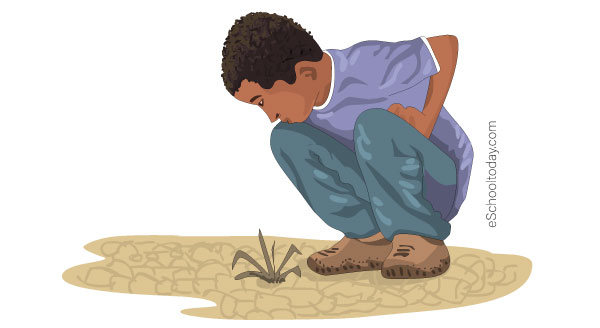- Droughts
What is a drought?
Drought is a difficult one to define because it is often used in more than one context. In simple terms, it is the absence of water for a period, at a place where it is considered not normal compared to its usual conditions.
 The distribution of all the water on the earth’s surface is not even. Some places have lots of freshwaters (rivers, lakes, lagoons, ponds, etc.) and are continuously replenished by rainfall, runoffs, and water from underground. On the other hand, other places are known to have very little water.
The distribution of all the water on the earth’s surface is not even. Some places have lots of freshwaters (rivers, lakes, lagoons, ponds, etc.) and are continuously replenished by rainfall, runoffs, and water from underground. On the other hand, other places are known to have very little water.
Therefore, if a region with lots of rainfall goes for a couple of weeks without rain, and people, animals, and plants begin to experience a bit of dryness, it can be called a drought. At the same time, that condition may be very normal for places with no water and can go for months without any rain with little problems.
With this in mind, we can describe a drought scenario to be ‘A relatively long time where there is not enough water than there usually is, as a result of dry weather, to support human, animal, and plant life.
Droughts may not be an issue just because there is less or no precipitation. However, it becomes an issue when it begins to affect water supply for irrigation, municipal, industrial, energy, and ecosystem function.
People often do not see droughts as natural disasters like tornadoes, hurricanes or floods, because they do not have the usual immediate destructive ability, but they can be very catastrophic in the long run. Server droughts can have very serious consequences.
